Found 3,411 symbols matching: Page #6
Asymmetric
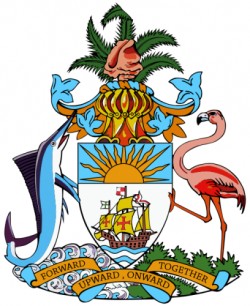 | Coat of arms of Bahamas The Coat of Arms of the Bahamas contains a shield with the national symbols as its focal point. |
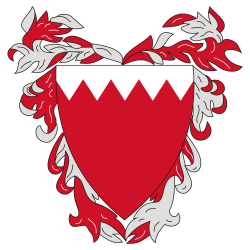 | Emblem of Bahrain The current coat of arms of Bahrain is a coat of arms that was originally designed in 1932 by Charles Belgrave, the British governor and adviser to the then-Sheik of Bahrain. The design has undergone… |
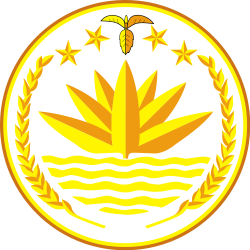 | National Emblem of Bangladesh The national emblem of Bangladesh was adopted shortly after independence in 1971. |
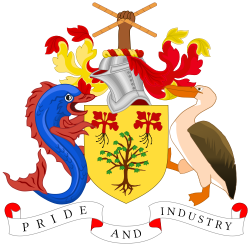 | Coat of arms of Barbados The coat of arms of Barbados was adopted on 14th February, 1966 by decree of Queen Elizabeth II. The Coat of Arms of Barbados was presented by the Queen to the President of the Senate, Sir Grey Massi… |
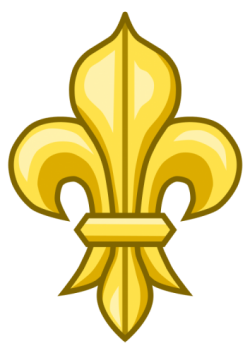 | Fleur-de-lis The fleur-de-lis or fleur-de-lys (plural: fleurs-de-lis) is a stylized lily (in French, fleur means flower, and lis means lily) or iris that is used as a decorative design or symbol. It may be "at on… |
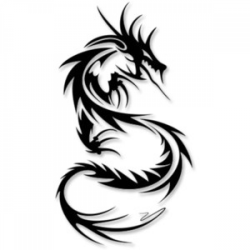 | Dragon A dragon is a legendary creature, typically with serpentine or reptilian traits, that features in the myths of many cultures. There are two distinct cultural traditions of dragons: the European drago… |
 | Phoenician alphabet The Phoenician alphabet, called by convention the Proto-Canaanite alphabet for inscriptions older than around 1200 BC, was a non-pictographic consonantal alphabet, or abjad. It was used for the writi… |
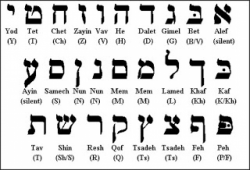 | Hebrew alphabet The Hebrew alphabet (alefbet ʿIvri ), known variously by scholars as the Jewish script, square script, block script, or more historically, the Assyrian alphabet, is used in the writing of the Hebrew … |
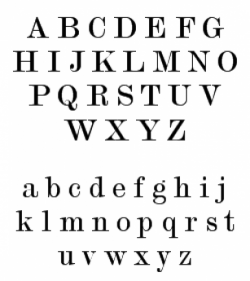 | English alphabet The modern English alphabet is a Latin alphabet consisting of 26 letters. |
 | Grand Staff When music on two staves is joined by a brace, or is intended to be played at once by a single performer (usually a keyboard instrument or the harp), a great stave (BrE) or grand staff (AmE) is creat… |
 | Ledger or Leger Lines Used to extend the staff to pitches that fall above or below it. |
 | Accolade, brace Connects two or more lines of music that are played simultaneously. Depending on the instruments playing, the brace, or accolade, will vary in designs and styles. |
 | G clef The centre of the spiral defines the line or space upon which it rests as the pitch G above middle C, or approximately 392 Hz. |
 | C clef This clef points to the line (or space, rarely) representing middle C, or approximately 262 Hz |
 | F clef The line or space between the dots in this clef denotes F below middle C, or approximately 175 Hz. |
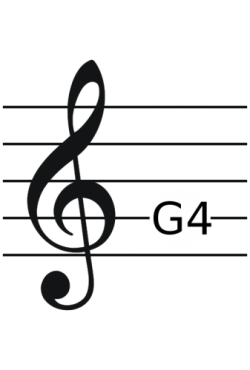 | Treble Clef When the G-clef is placed on the second line of the stave, it is called the treble clef. This is the most common clef used today, and the only G-clef still in use. For this reason, the terms G-clef a… |
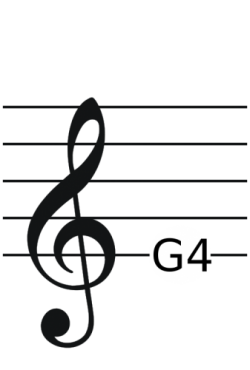 | French Violin Clef When the G-clef is placed on the first line of the stave, it is called the French clef or French violin clef. |
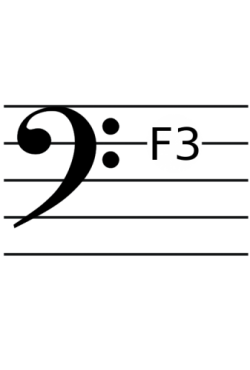 | Bass clef When the F-clef is placed on the fourth line, it is called the bass clef. This is the only F-clef used today, so that the terms "F-clef" and "bass clef" are often regarded as synonymous. |
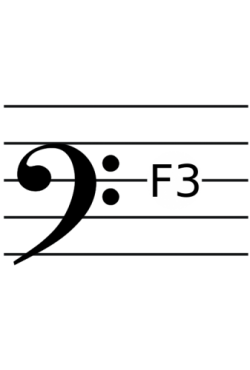 | Baritone clef When the F-clef is placed on the third line, it is called the baritone clef. |
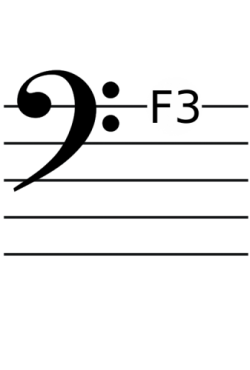 | Sub-bass clef When the F-clef is placed on the fifth line, it is called the sub-bass clef. It is identical to the treble clef transposed down 2 octaves. |
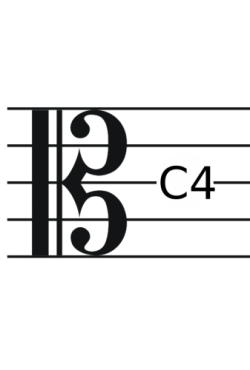 | Alto clef When the C-clef is placed on the third line of the stave, it is called the alto clef. As with all C-clefs, this line indicates the position of middle C. |
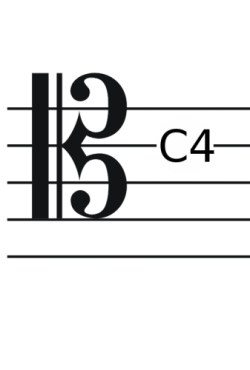 | Tenor clef When the C-clef is placed on the fourth line of the stave, it is called the tenor clef. |
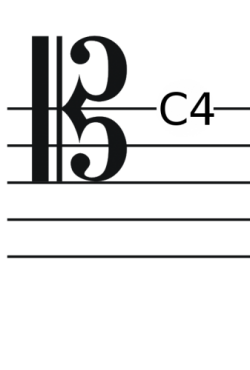 | bariton clef Because it is equivalent to the F-clef on the third line, the C-clef on the fifth line version of the baritone clef is a rarity. |
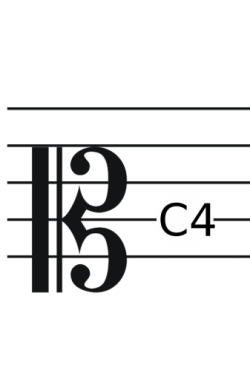 | Mezzo-soprano clef When the C-clef is placed on the second line of the stave, it is called the mezzo-soprano clef. |
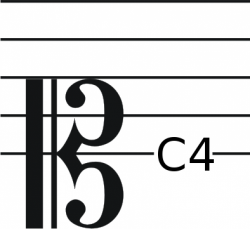 | Soprano clef When the C-clef occurs on the first line of the stave, it is called the soprano clef. |
